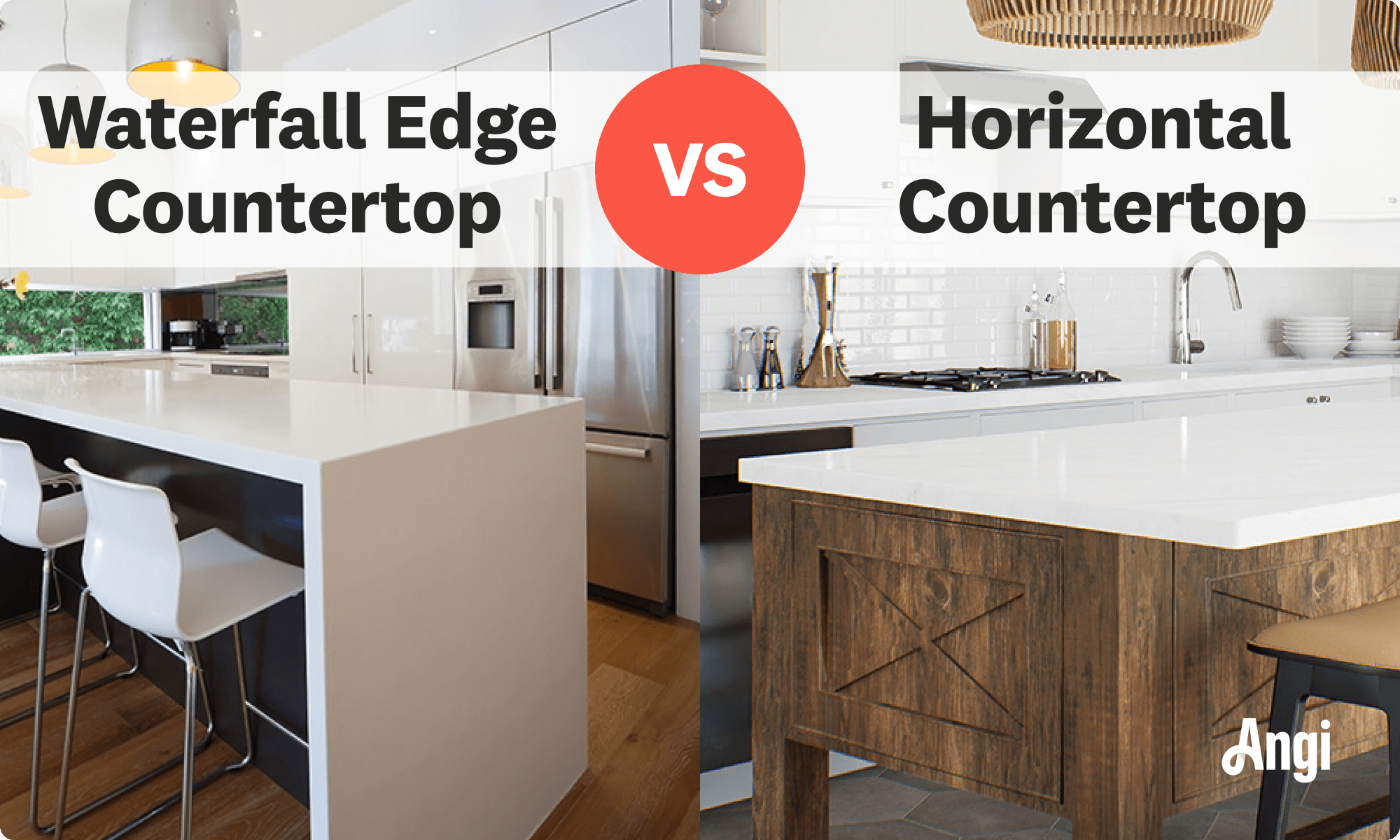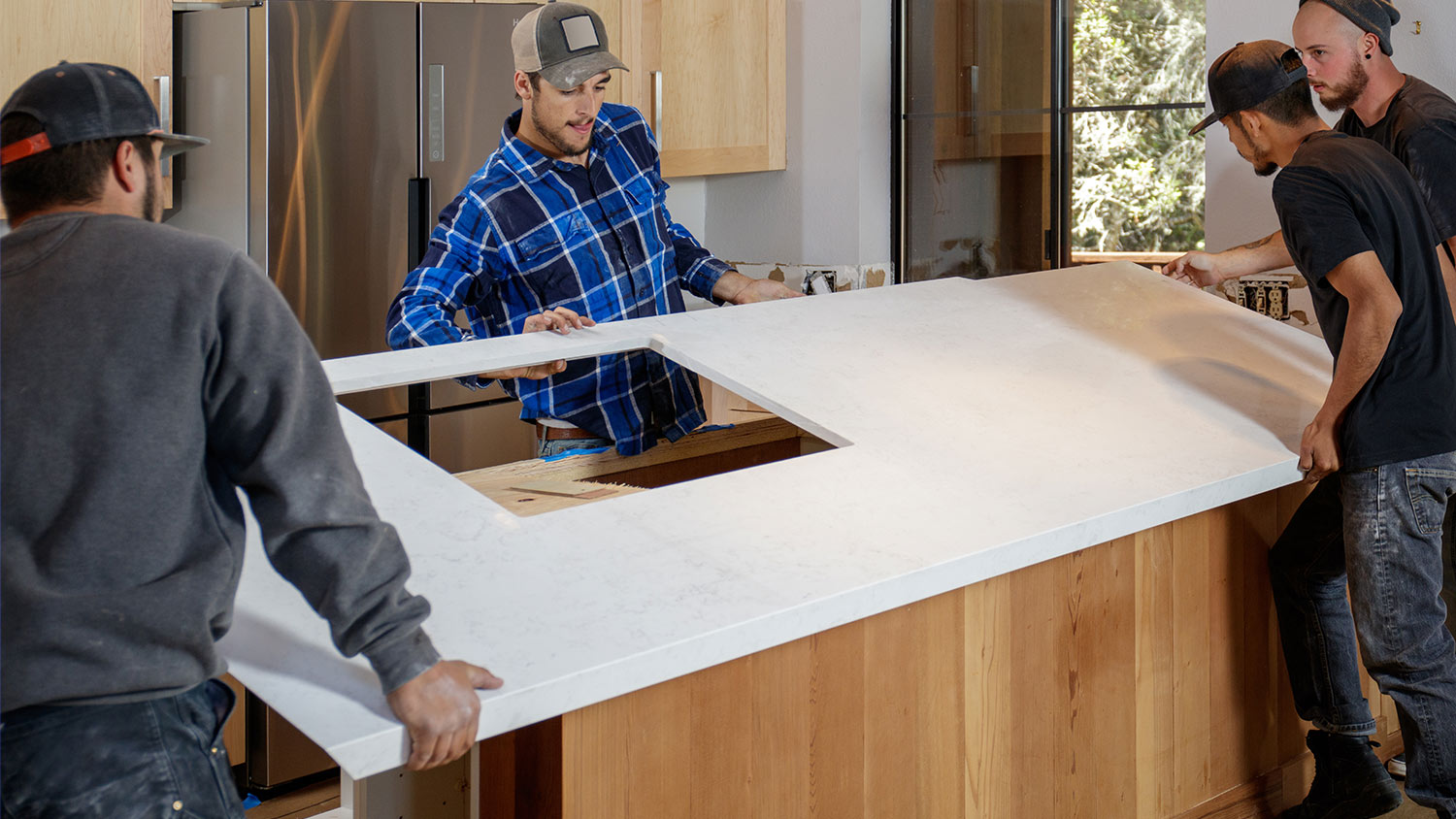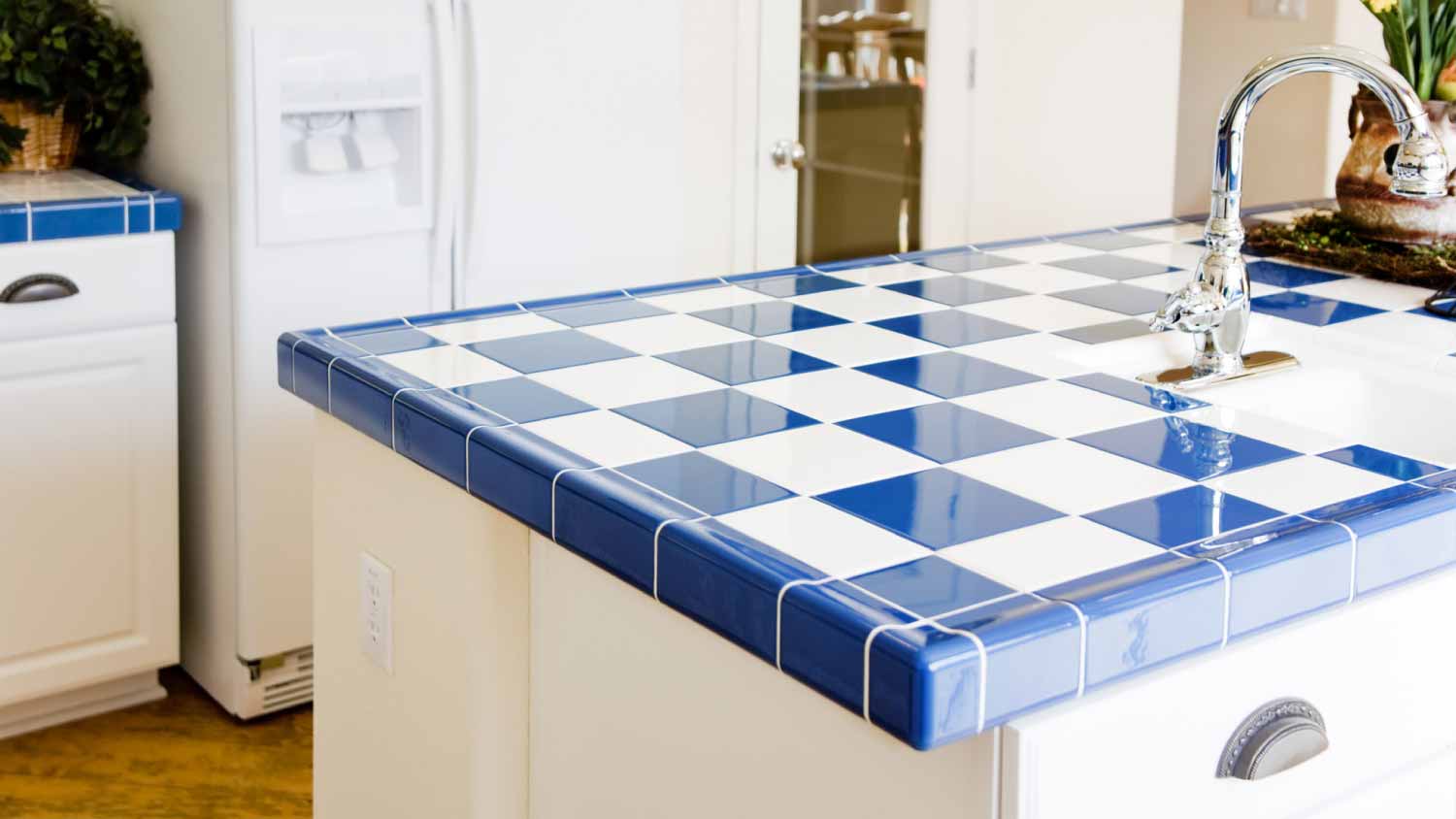
Kitchen islands are multipurpose workhorses in your kitchen. When looking to add one to your home, you should consider its size, materials, and its primary use in your home. Learn about the price of kitchen islands and their different features.
High-end style with lasting value


Waterfall edge countertops are known for their seamless and continuous appearance.
They tend to make a bigger visual impact compared to traditional horizontal slabs.
They are available in a broad range of natural and engineered materials.
Homeowners should always work with an experienced pro to install countertops.
Many homeowners seeking to up their kitchen design game are interested in attention-grabbing waterfall edge countertops. These surfaces extend seamlessly down the sides of cabinetry, adding a pop of modern style to spaces. If you’re curious about what makes a waterfall edge countertop stand out, here’s what to know before taking the plunge.
As its name implies, a waterfall edge countertop flows vertically down the sides of base cabinets and kitchen islands. Compared to conventional counters with horizontal slabs, these beauties create a seamless and continuous surface down to the floor, resulting in a sculptural look.
While waterfall edge countertops are known for the elegant visual statement they create, they are also pretty practical. They protect the sides of cabinetry from scuff marks, water damage, and other types of daily wear and tear.

Standard horizontal countertops are also stylish, but they focus first on function by providing a surface for food prep and entertaining. Waterfall edge countertops blend practicality with a bigger visual impact by creating a wraparound effect. Another perk is that they add a durable outer layer to cabinets and islands in high-traffic kitchens, helping to protect the investment you made in your space.
While waterfall edge countertops are available in various materials, from natural and engineered stone to wood, they are more expensive to install than traditional slabs. Installation requires more materials and precious cutting, making these countertops luxury fixtures.

When considering a waterfall edge countertop, it is essential to think beyond aesthetics. The best countertop material for your home should balance durability and maintenance you can easily handle.
Quartz is an engineered stone that has become a favorite for waterfall designs. In addition to its availability in various colors and patterns, it is a nonporous and durable surface that doesn't require sealing. Since it is human-made, it also offers visual consistency. Contractors can easily match seams for that uniform waterfall look.
Other popular materials include marble, wood, and concrete, especially for homeowners looking to add a touch of elegance, rustic warmth, or a more industrial vibe to their kitchens. While wood and concrete are more affordable than marble or quartz, homeowners shouldn't expect to save much on labor. These surfaces need regular sealing to prevent scratches and stains, adding to the maintenance workload.
If you're unsure where to start, a local countertop contractor can help inform your decision. They'll explain the pros and cons of each countertop material and help you choose the best option that fits your design goals and daily needs.
Quartz and granite are the most popular stone countertop materials among homeowners. According to responses from 8,100 Angi customers, 44.6% requested granite, while 29.3% opted for quartz. Quartz is particularly well-suited for modern design features like waterfall edges, while granite remains a favorite for its natural beauty and durability in a variety of edge styles.
Here are several more considerations that go beyond materials.
Waterfall countertops are heavy, especially for homeowners considering stone materials like marble, granite, or quartz. Your existing cabinetry or island may need additional framing and support to carry the weight. Sometimes, cabinetry and islands need to be replaced altogether with something more substantial that resists sagging and shifting over time.
Of course, a traditional horizontal counter requires accurate measurements, but waterfall counters take it to the next level with mitered cuts to ensure all panels connect at a perfect 90-degree angle. This work could also involve leveling your kitchen floor, cabinets, and walls to create a seamless flow.
Kitchen islands often include outlets or plumbing, but a waterfall edge might conceal or complicate access. In these cases, you must consult an electrician or plumber to ensure your new waterfall countertop is as functional as it is beautiful.
Waterfall installations take more time to fabricate and install, so homeowners must plan for longer lead times. Simply put, you can’t rush the installation.
Most homeowners spend $1,850 to $4,500 on countertop costs based on the material and size. However, waterfall countertops require approximately six square feet more per side than a standard horizontal slab, which increases the total cost significantly.
Granite countertops cost $10 to $140 per square foot, depending on the type of stone used, and quartz—a popular waterfall material choice—costs $50 to $200 per square foot. Labor costs also increase with waterfall styles as they require more precise cutting, additional workers, and more time to install them just right.
Installing countertops, and especially waterfall countertops, is not a DIY-friendly project. To get the expert results you deserve, you need perfect cuts and edge matching in addition to cabinets or an island that can support the weight of the countertop material. One misstep can cause a costly mistake, making professional installation totally worth the investment.
Always on time, very knowledgeable about his craft,cleans up after themselves, reasonable pricing. Would highly recommend them to paint my house again.
This is a small family owned company that will give you excellent service.
A very good company to work with: professional, reasonably priced, and willing to go above and beyond to satisfy the customer. We had rotted wood and new aluminum roof trim installed, and the result is perfect and done on time. I definitely recommend them and will certainly use them for...
I know Chris and is family business for long time , they are the best and very professional, on time and easy with quality work
The service was excellent! Norwin's trap caught the dangerous bob cat in short order. I am very thankful!
Brandon Burnette did such a great job. I'm so happy I had him as my worker today. Very nice and friendly young man. 10 star in my book.
We had Brandon from DeMarks come out and power wash our siding. The house is 26 years old and had never been washed before. I can not say enough about how hard he worked to get every inch of the house sparkling clean. Not only did he wash the siding, but the soffit, fascia, and gutters as...
We had LHR install a new roof and gutter system. While they were not the cheapest, they were considered the most reliable and fetish for using only high-value products that would last for many years. Additionally, they were highly professional and never tried to push their services or any...
LOVE our new kitchen quartz countertop and backsplash. From the first phone call to installation, we were so impressed!!! Thomas is a great businessman and installers were on point. Couldnâ t ask for any better service. Thank you Vinnie and Donna
The crew showed up on time and finished the home theater installation as promised. The guy in charge of the team made sure it was done correctly, right down to the smallest detail. Highly recommended!
From average costs to expert advice, get all the answers you need to get your job done.

Kitchen islands are multipurpose workhorses in your kitchen. When looking to add one to your home, you should consider its size, materials, and its primary use in your home. Learn about the price of kitchen islands and their different features.

Countertop repair costs may be the deciding factor between replacing or repairing your counter. Let’s break down the cost to repair, resurface, or relaminate.

Discover cabinet installation cost estimates, including average prices, key cost factors, and tips to save on your new kitchen or bathroom cabinets.

Choose between five highly rated countertop materials for your next kitchen remodel, including granite, engineered quartz, butcher block, concrete, and laminate.

Learn how to tile kitchen countertops like a professional with this step-by-step guide—from tile selection to grout cleaning and sealing.

If you’re stuck on how to attach a dishwasher to a countertop, these helpful tips can take the strain off the process.